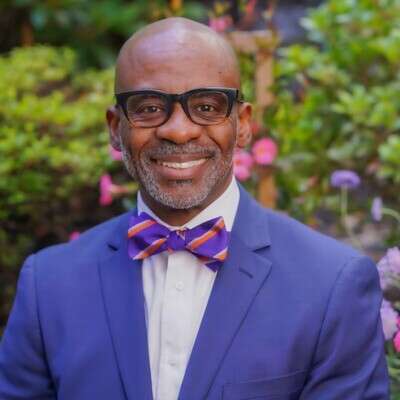For senior executives, moving forward amid change and uncertainty begins with knowing where you stand.
Adapted, and first Published on LinkedIn November 11, 2015 and the good coach February 10, 2020
The HR Leader of a Fortune 200 company shared with me that his biggest challenge is that some of their senior leaders who were successful in the past, will not be successful in the current market environment. The company has a financially driven culture driven from Corporate HQ and it historically did well even during previous market downturns. It is traditionally organized by BUs. The BU leadership teams are based in Shanghai since China is 50-70% of their businesses. The team has less expertise on other countries outside of China. According to the HR Leader a matrixed organization will be a challenge for them.
Asia Pacific was growing 2% but HQ mandated higher growth despite a slowdown in economy. Some of their BU leaders who previously always delivered on their targets, now aren’t. These leaders operate in a traditionally structured, policy driven organization where they encounter a lack of clear principles of how to proactively pursue their targets. They grapple in industry sectors that are now faster paced. Major competitors used to be other multinationals, now they are up against more agile local companies.
The Fortune 200 company’s challenge is certainly not unique. Today’s business environment is VUCA, an acronym from the U.S. Military that stands for volatile, uncertain, complex and ambiguous. Leaders today are besieged with information. Technology advances have created a much faster and more complex world. The ease and speed of communications result in expectations of faster reaction times. According to the renowned mindfulness expert Rasmus Hougaard, our attention in the workplace is under siege.[1] As a result, leaders and employees are under pressure, always on, information overloaded, working in distracted environments, or what Hougaard calls the “PAID” reality.[2]
CEOs and leadership teams will thus need a different set of skills to succeed compared to those needed in the past. Meanwhile, companies are transforming their businesses and their organizations. Executives are expected to deliver while adapting to these changes. In efforts to adapt to a VUCA world, it is imperative that organizations sufficiently build a new culture and opportunities for their executives to learn these skills and mindsets.
Current learning environment: After employment ceases
Today, companies are less forgiving if not less patient. It pains me that an increasing number of senior executives reach out to me for advice about external job opportunities after recently finding out they are being let go. Sadly, some of these displaced executives do not have much time because they are based with their families in cities with very high costs of living.
At the juncture when executives have been offboarded, or when they decide to seek external opportunities because they no longer find fulfilment in their current jobs, it is important that they regain their belief in themselves. Their best successes are still ahead of them but meanwhile, how do they differentiate themselves among the many other executives being recruited into new jobs? Both recruiters and companies are interested in how executives achieve business goals, how they tackle obstacles and manage change.
I would coach these executives by asking questions that would lead them to reflect and discover what personal values they bring to their work that have made a positive difference in each role they have been appointed to in their careers. How have they added value to a role they were appointed to? What was the situation they inherited on Day 1? What actions did they take? What where the results?
I also mentor them by sharing advice on the entire job search process. Contrary to popular belief, headhunters should not be the primary focus of a job search.
Coaching and mentoring executives who have been offboarded or who are still employed but wish to explore external opportunities goes beyond the scope of an executive search consultant’s job. Coaching and mentoring are important to me because I have been in their shoes. I want to make a difference by helping executives deal with challenges and change. In my past corporate life, while I had close relationships with my wife, peers and employees, there were many occasions when I felt that being a leader is a lonely endeavour. I made mistakes, at work and at home, which could have been avoided if I had a professional coach to help me sharpen my awareness.
Why do some executives miss the signs that their careers are in danger?
From all my professional experiences, there are at least 5 common signs that a career is in danger:
- Some situations and signs are more transparent than others. In the case of planned M&As, rumours reach all levels beyond the senior executive team. Planned investments are placed on hold and communications about short to medium term strategies become less defined. Cultures can shift after new top leadership is appointed and misjudgements are often made about the value a well-entrenched senior executive can bring to a new boss. Cultural shifts create unclear expectations and can result in executives missing certain cues when it comes to career security.
- HR Leaders must facilitate the right kind of conversations; however, these cannot happen until a company’s new DNA is established. Senior executives must not depend on HR Leaders to recognize these warning signals and intervene on their behalf. Many senior executives who have been successful in the past develop a form of myopia that blinds them to changes that are happening. Success often breeds arrogance followed by a sense of invincibility, regardless of changing dynamics.
- The best leaders are able to adapt to a VUCA world by keeping their egos in check, and by letting go of what defined success in the past. Executive coaches play a key role in helping senior executives adapt to shifts in organizational dynamics but leaders who thrive best are those who take the initiative to own the responsibility of adapting. Pragmatic leaders know they are only as good as their future successes and that the value they bring to a company is temporary.
- Mindfulness is a must and requires being attuned to what is occurring in one’s surroundings while reserving any judgments. Senior executives must be aware of not only their boss’s but also their own tone, facial expressions and body language while responding to new and challenging situations.
- Success requires humility to reign in one’s ego and seek valuable feedback. When was the last time he/she checked in with the boss about business goals? Are “current” priorities still relevant? Have the measure and scope of success changed?
Tips on how to better manage one’s career
We have great expectations on anyone who is called a Leader. The best leaders I have seen adopt these practices.
- Self-awareness is a key tool in managing one’s career. In retrospect, the most recent senior executive who reached out to me was in denial of these signs and I could only hope that he was ready by the time he was let go. Self-awareness is required to gain wisdom that it might be time to move on, without burning bridges.
- Leaders who thrive are always adapting and networking to build alliances internally and externally. Forging connections fosters an instinctive ability to listen and learn from industry customers, suppliers and competitors. These relationships can help a senior executive understand new skills required for future success and identify the warning signs of a career in jeopardy. Networking has the additional advantage of gaining the executive visibility that may lead to external opportunities.
- Great leaders recognize that success is rarely achieved in isolation. They acknowledge and speak highly about their teams and peers during discussions about achievements. They acknowledge the trust and support of their bosses in celebrating their most challenging wins.
- In today’s complex business and work environments, one mentor is not enough. The best leaders build a personal “board of advisors.”[3] These are a group of people they consult regularly to give advice and feedback. The personal “board of advisors” can include a boss, business associate, a mentor, a role model and a close friend who can provide the career and psychosocial support the leader needs.
Conclusion
It is more than ever a challenging time to be a business leader and to work for a senior executive leading a business. Expectations from bosses, peers, customers and industry partners are high while work pace and market reaction times are faster. Careers can be at risk when VUCA business environments are the norm rather than the exception. Signs that a career is at risk and tips to manage one’s career were discussed. The ability to manage one’s awareness is a critical requirement for the business leader. Coaching and mentoring can help leadership teams successfully adapt to the many disruptions and changes they face today.
References
[1] Hougaard, Rasmus and Carter, Jacqueline, The Mind of the Leader. Boston: Harvard Business Review Press, 2018.
[2] Rasmus Hougaard and Jacqueline Carter, “How to Thrive in the Attention Economy,” Mind & Body, November 3, 2015, https://greatergood.berkeley.edu/article/item/how_to_thrive_in_the_attention_economy.
[3] Yan Shen, Richard D. Cotton and Kathy E. Kram, “Assembling Your Personal Board of Advisors,” MITSloan Management Review, March 16, 2015, https://sloanreview.mit.edu/article/assembling-your-personal-board-of-advisors/




